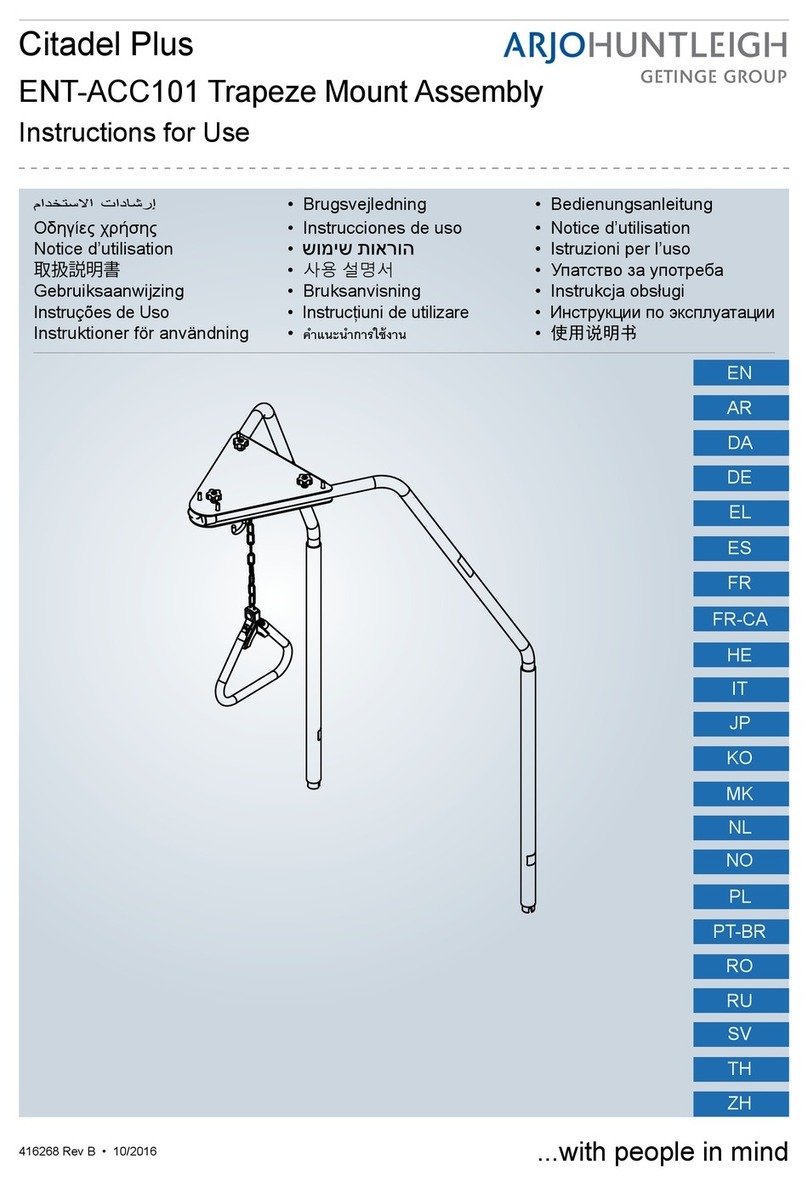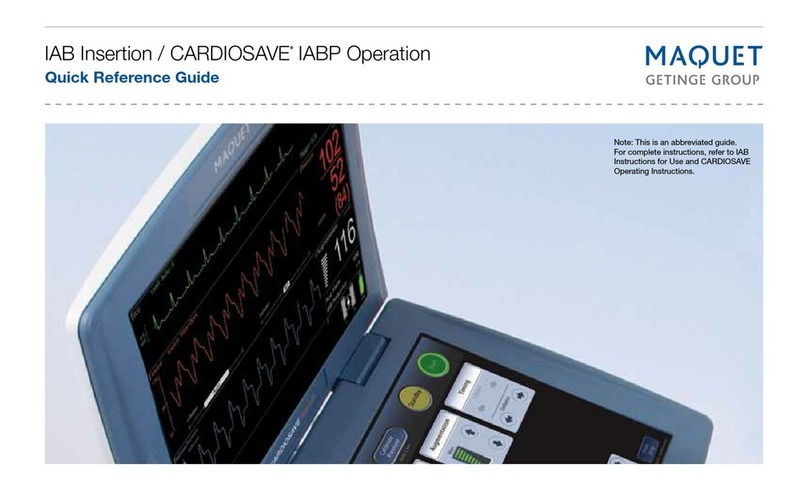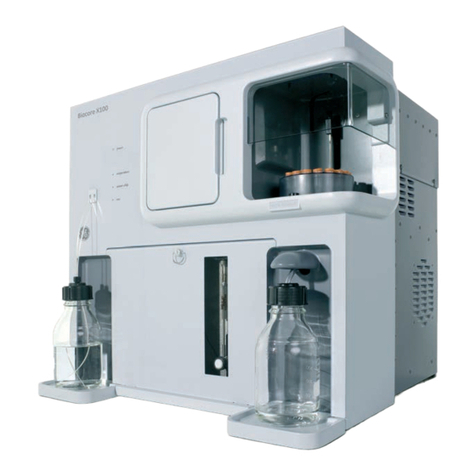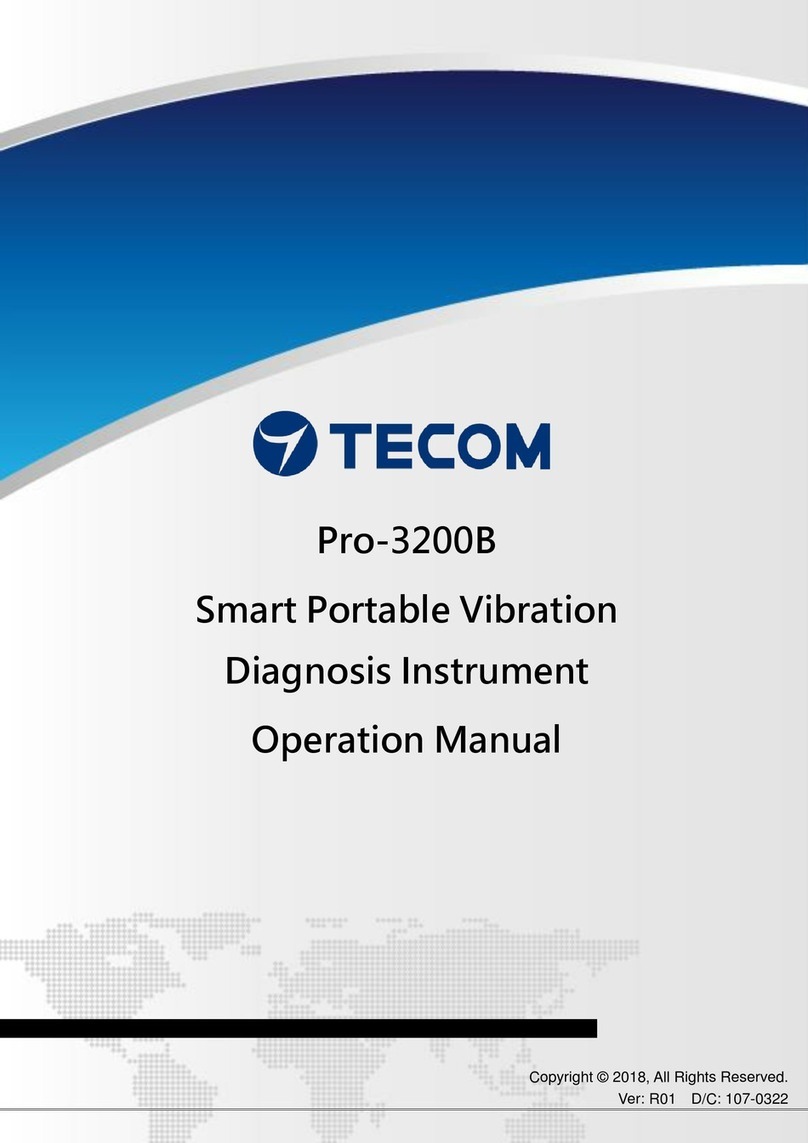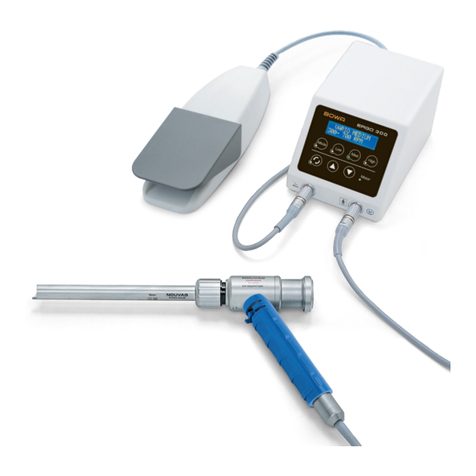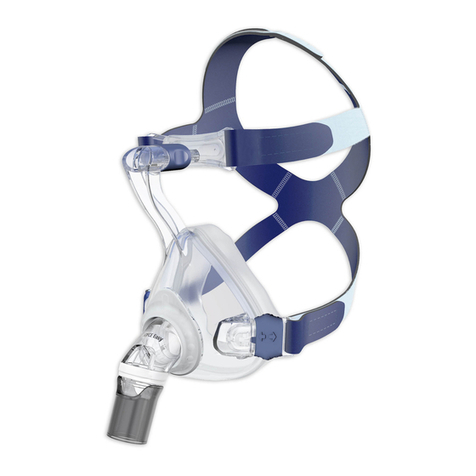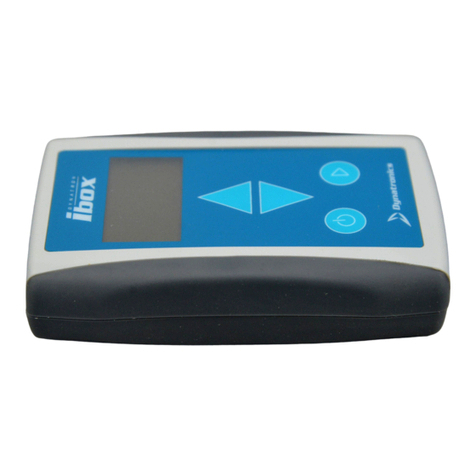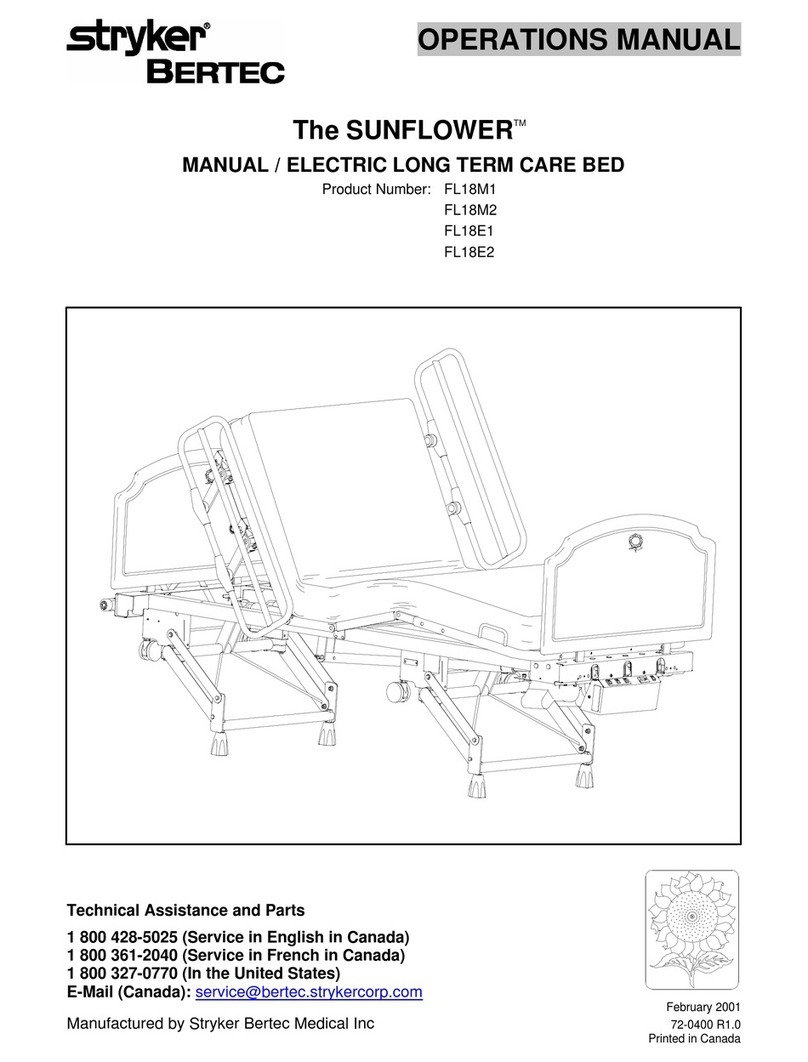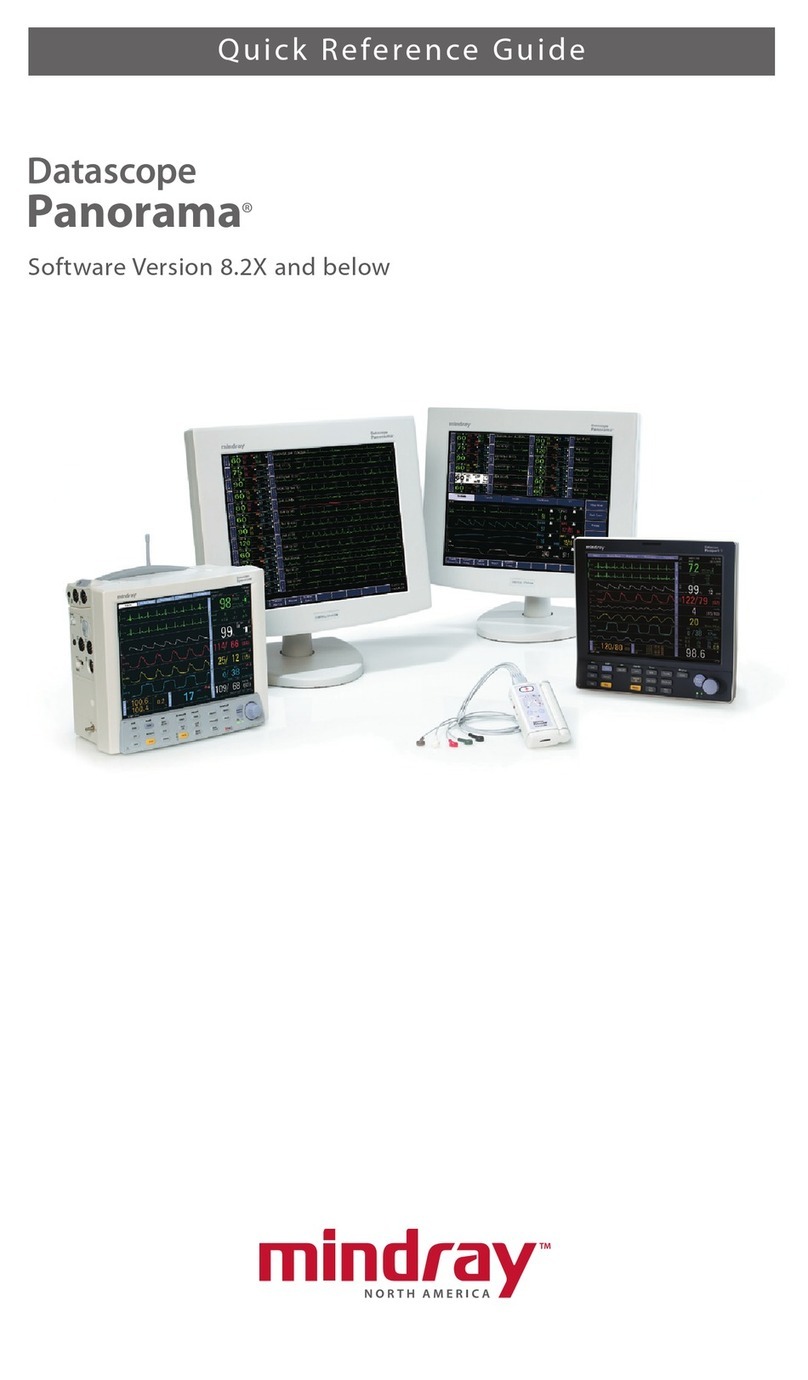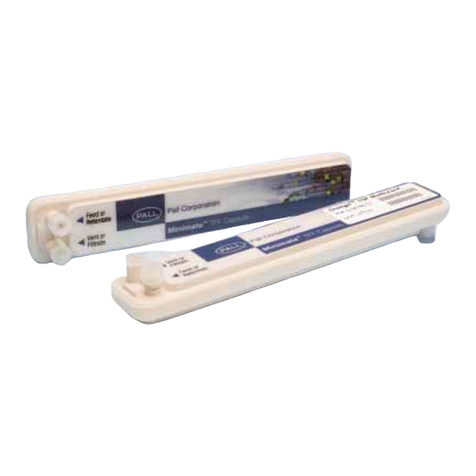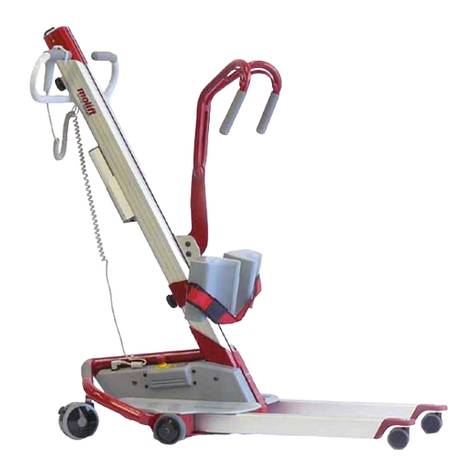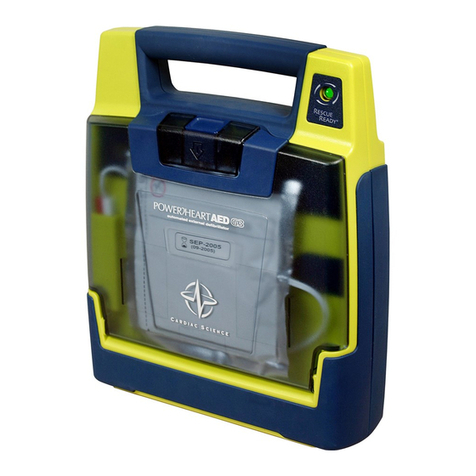GETINGE GROUP Maquet SERVO-s VENTILATOR SYSTEM V7.0 User manual

x
User's Manual
SERVO-s VENTILATOR SYSTEM V7.0


TABLE OF CONTENTS
5|Introduction
1
15|System Overview
2
35|Power supply
3
41|Operation overview
4
59|Monitor and record
5
67|Ventilation, modes and functions
6
119|Alarms
7
127|Optional Accessories
8
131|System messages
9
139|Start-up configuration
10
143|Technical data
11
163|Definitions
12
165|Appendix • User interface
13
177|Certificates
14
179|Index
15
SERVO-s VENTILATOR SYSTEM V7.0, User's Manual
Infologic 1.64.2.1 3
| TABLE OF CONTENTS |

4SERVO-s VENTILATOR SYSTEM V7.0, User's Manual
Infologic 1.64.2.1
| TABLE OF CONTENTS |

1.1 DEVICE DESCRIPTION
This section provides general information
about the SERVO-s Ventilator System along
with guidelines for appropriate use.
1.1.1 DEVICE DIAGRAM
1
2
3
SVS_0001_EN
1.1.2 DEVICE COMPONENTS
The SERVO-s Ventilator System consists of
the following components:
1. User Interface—for setting ventilation
modes, displaying patient data, and
indicating alarms
2. Patient Unit—for mixing gases
3. Patient Breathing System—for delivering
and exchanging gases
1.1.3 INTENDED USE
The SERVO-s Ventilator System is intended
for treating and monitoring patients ranging
from pediatrics to adults with respiratory failure
or respiratory insufficiency
1.1.4 INTENDED USER
The SERVO-s Ventilator System should be
used only by those who:
are professional healthcare providers, and
have received training in the use of this
system, and
have experience of ventilation treatment.
1.1.5 INTENDED USE ENVIRONMENT
The SERVO-s Ventilator System should be
used only:
in hospitals
in facilities whose primary purpose is to
provide healthcare
during transport of a patient within hospitals
or healthcare facilities
1.1.6 CLEANING AND MAINTENANCE
Please refer to the SERVO-i/s Cleaning and
Maintenance User's Manual.
6SERVO-s VENTILATOR SYSTEM V7.0, User's Manual
| 1| Introduction |

1.1.7 SERVICING GUIDELINES
CAUTIONS:
Regular Service: The SERVO-s
Ventilator System must be serviced at
regular intervals by MAQUET authorized
personnel who have received specialized
training.
Complete Service Records: All service
performed on the SERVO-s Ventilator
System must be recorded in a service
log in accordance with hospital
procedures and local and national
regulations.
Service Contract: We strongly
recommend that all service on the
SERVO-s Ventilator System should be
performed as part of a service contract
with MAQUET.
1.1.8 DISCLAIMERS
Improper Use Environment
MAQUET has no responsibility for the safe
operation of SERVO-s Ventilator System if
the Intended Use Environment requirements
specified in this document are not followed.
Nonprofessional Servicing
MAQUET has no responsibility for the safe
operation of the SERVO-s Ventilator System
if installation, service or repairs are
performed by persons other than MAQUET
authorized personnel.
SERVO-s VENTILATOR SYSTEM V7.0, User's Manual 7
| Introduction | 1|

1.2 WARNING, CAUTION,
IMPORTANT AND NOTE
Follow these safety guidelines. Additional
warnings appear in context throughout this
document.
Information is highlighted with Warning,
Caution, Important or Note, where:
WARNING! Indicates critical information
about a potential serious outcome to the
patient or the user.
CAUTION: Indicates instructions that must
be followed in order to ensure the proper
operation of the equipment.
Important: Indicates information intended
to help you operate the equipment or its
connected devices easily and conveniently.
Note: Indicates information requiring special
attention.
1.2.1 GENERAL
This manual summarizes the functions and
safety features of the SERVO-s Ventilator
System. It is not all-inclusive and should not
be construed as a substitute for training.
WARNING!
Always perform a Pre-use check before
connecting the ventilator to a patient.
If any of the following occurs, discontinue
use of the ventilator and contact a
service technician:
- Unfamiliar pop-up windows on the
screen
- Unresolvable alarms
- Unfamiliar sounds
- Any unfamiliar or unexplained event
Keep the ventilator upright during use.
Make sure that ventilation is started when
a patient is connected to the ventilator.
When the ventilator is in Standby, a
flashing message, Patient not ventilated,
is displayed as a reminder directly above
the word Standby.
When the ventilator is connected to a
patient:
- Do not lift or disconnect the expiratory
cassette.
- Continuously monitor the settings and
measurements displayed on the
screen.
- Make sure a resuscitator is readily
available.
The SERVO-s Ventilator System must be
operated only by authorized personnel
who are well trained in its use. It must be
operated according to the instructions in
this User´s manual.
8SERVO-s VENTILATOR SYSTEM V7.0, User's Manual
| 1| Introduction |

Do not modify or remove any original
parts.
Do not cover the ventilator in any way,
since the functioning of the equipment
may be adversely affected.
When the ventilator is used for MCare
Remote Service, use only network
equipment that is safe and in compliance
with the relevant electrical and EMC
standards such as IEC-60950.
Note: The network cable is excluded
from this requirement.
Always disconnect the network cable
before starting ventilation when the
ventilator is used for MCare Remote
Service.
Positive pressure ventilation can be
associated with the following adverse
events: barotrauma, hypoventilation,
hyperventilation or circulatory
impairment.
The SERVO-s Ventilator System is not
intended to be used during radiotherapy,
since this may cause system malfunction.
The SERVO-s Ventilator System must not
be used in a hyperbaric chamber.
The SERVO-s Ventilator System must not
be used with helium.
Only accessories, supplies, and auxiliary
equipment recommended by MAQUET
should be used with the ventilator
system. Use of any other accessories,
spare parts or auxiliary equipment may
cause degraded system performance
and safety.
The power supply cord must be plugged
directly into the mains power outlet
without the use of any multiple socket
outlets. If a multiple socket outlet is used
together with other products, total
leakage current might be exceeded at
earth fault.
SERVO-s VENTILATOR SYSTEM V7.0, User's Manual 9
| Introduction | 1|

CAUTIONS:
In USA, Federal law restricts this device
to sale by or on the order of a physician.
The expiratory channel and expired gas
from the exhaust port may be
contaminated.
Refer to the Installation instructions to
assemble the system or options to obtain
a proper mechanical assembly.
Service, repair and installation must be
performed by MAQUET authorized
personnel only.
When lifting or moving the ventilator
system or parts of the system, follow
established ergonomic guidelines, ask
for assistance, and take appropriate
safety precautions.
Before use, make sure the system
version displayed under Status
corresponds to the system version
described in the User´s Manual.
Extra care should be taken when
handling tubes, connectors and other
parts of the patient circuit. The use of a
support arm to relieve the patient from
the weight of the tubing system is
recommended.
When using the MCare Remote Service
function, install the network cable so that
there is no risk of anyone tripping over
it.
Do not leave the patient unattended
when connected to the ventilator.
MAQUET has no responsibility for the
safe operation of SERVO-s Ventilator
System if the Intended Use requirements
specified in this document are not
followed.
Contact a MAQUET representative
regarding decommissioning of the
equipment.
Disconnect the mains power cable from
the outlet to isolate the ventilator from
mains power.
Do not touch accessible connector
contacts and the patient simultaneously.
Important:
Always use a heat and moisture
exchanger (HME) or equipment to
prevent dehydration of lung tissue.
Securely attach all cables, etc, to
minimize the risk of unintentional
disconnection.
All excess fluids must be disposed
according to hospital routines.
10 SERVO-s VENTILATOR SYSTEM V7.0, User's Manual
| 1| Introduction |

1.2.2 POWER SUPPLY
WARNINGS!
The power cord must be connected only
to a properly grounded AC electrical
outlet to avoid the risk of electrical shock.
If only built-in batteries are mounted
inside the patient unit, then a high priority
alarm is activated if one or more of these
batteries are missing.
CAUTIONS:
Do NOT use antistatic or electrically
conductive tubing with this system.
Avoid contact with external electrical
connector pins.
1.2.3 FIRE HAZARD
WARNINGS!
Keep the system and its gas hoses clear
of all ignition sources.
Do not use the system with worn or
frayed hoses or hoses that have been
contaminated by combustible materials
such as grease or oil.
Oxygen-enriched gas is extremely
flammable: if you detect a burning odor,
disconnect the oxygen supply, mains
power and remove the batteries.
Make sure that both the mains power
outlet and the power supply connector
are accessible.
SERVO-s VENTILATOR SYSTEM V7.0, User's Manual 11
| Introduction | 1|

1.2.4 GASES
CAUTION: The system is not intended to
be used with any anesthetic agent.
Important:
Supplied gases shall meet the
requirements for medical grade gases
according to applicable standards.
Maximum levels:
Air
H2O < 7 g/m3
Oil < 0.5 mg/m3
Chlorine: must not be detectable 1
Oxygen
H2O < 20 mg/m3
Oil < 0.3 mg/m3
Note: For devices with serial numbers
below 25000 that are updated to version
7.0, the maximum inlet gas pressure will be
reduced (see the Technical data chapter on
page 146).
1.2.5 AUXILIARY EQUIPMENT
CAUTIONS:
Accessories, supplies, and auxiliary
equipment used with the ventilator
should:
- be recommended by MAQUET
- meet EN/IEC 60601-1standards
- meet IEC standards as a whole system
If a scavenging system (i.e. gas
evacuation) is connected to the ventilator,
it must conform to ISO8835-3 guidelines
for subatmospheric pressure and
induced flow.
Measurements of parameter values that
have been processed by auxiliary
equipment:
- may be inaccurate if equipment not
authorized by MAQUET is used
- should be discounted if they conflict
with information on the ventilator
screen
- must not substitute for therapeutic or
diagnostic decisions
Note: Applied parts, i.e. equipment making
physical contact with the patient, comprise
nebulizer patient unit and cable and the
Ventilator Breathing System described in
System Flow Chart, Ventilation, Patient
Connection, part no. 66 92 522.
1. If the compressed air is generated by a liquid ring compressor there is a potential risk of chlorine in the supplied
air.
12 SERVO-s VENTILATOR SYSTEM V7.0, User's Manual
| 1| Introduction |

1.3 VERSION AND CONFIGURATIONS
This manual applies to version 7.0 of the SERVO-s Ventilator System.
1.3.1 PATIENT RANGE (KG)
Weight 10 – 250 kg.
1.3.2 CONFIGURATIONS
The SERVO-s Ventilator System can be used
in both invasive and non invasive ventilation.
Standard Configuration
Options
Bi-Vent
Non Invasive Ventilation (NIV)
Lung Mechanics
PRVC (incl. SIMV (PRVC) +
PS)
PC (incl. SIMV (PC) + PS)
VC (incl. SIMV (VC) + PS)
PS/CPAP
SERVO-s VENTILATOR SYSTEM V7.0, User's Manual 13
| Introduction | 1|

14 SERVO-s VENTILATOR SYSTEM V7.0, User's Manual
| 1| Introduction |

2.1 VENTILATOR
The User Interface is used to control ventilator
settings. Settings may be adjusted using
touchpads on the screen or a rotary dial.
Breathing parameters are continuously
measured and controlled. A difference
between the actual measured value of a
parameter and the preset or calculated value
results in the adjustment of gas delivery to
achieve the target value.
The system has two gas modules, one for air
and one for O2. Gases may be supplied by a
medical pipeline system, a compressor, or by
gas tanks.
Ensure that the ventilator is in its locked
position on the cart or holder used, to prevent
unintentional movements.
CAUTION: Lock the wheels if the ventilator
is not to be used for transportation.
16 SERVO-s VENTILATOR SYSTEM V7.0, User's Manual
| 2| System Overview |

2.1.1 SYSTEM OVERVIEW DIAGRAM
SERVO-s_Overview
1
2
4
5
6
8
9
7
2.1.2 SYSTEM COMPONENTS
1. Air and O2supply
2. Power cable
3. User Interface
4. Patient Unit
5. Expiratory inlet
6. Servo Duo Guard, viral/bacterial filter
7. Inspiratory outlet
8. Patient circuit
9. Emergency air intake
SERVO-s VENTILATOR SYSTEM V7.0, User's Manual 17
| System Overview | 2|

2.2 USER INTERFACE - CONNECTIONS, LABELS AND SYMBOLS
The User Interface includes:
a screen with active touchpads
fixed keys
a rotary dial
2.2.1 USER INTERFACE DIAGRAM
SVS-0013_XX
24
21
18
19
20
22
23
6
789
10
123
12
14 15
13
4
5
11
17
25
26
27
16
18 SERVO-s VENTILATOR SYSTEM V7.0, User's Manual
| 2| System Overview |

2.2.2 USER INTERFACE COMPONENTS
Refer to the User Interface Diagram for the
location of the following numbered
components:
1. Current mode of ventilation
2. Admit patient/Entered patient data and
admission date
3. System status parameters
4. Fixed keys
5. Main Rotary Dial—used to select a menu
touchpad or parameter box, to adjust
values, and to confirm settings
6. Special Function Keys—used to start
special ventilatory functions
7. Direct Access Knobs—used for immediate
adjustment of breathing parameters
8. AC Power indicator (green)
9. Standby indicator (yellow)—when the
ventilator is in Standby, a flashing
message, Patient not ventilated, is
displayed on the screen directly above the
word Standby.
10. Start/Standby key
11. Luminescence detector—for automatically
adjusting screen brightness
12. Text messages, including patient
triggering symbols
13. Alarm messages
14. Waveform area—for monitoring two to
three individually scaled parameters,
including a volume/pressure loop and a
flow/volume loop
15. Measured values and alarm limits display
(customizable)
16. Additional settings
17. Additional measured values
18. Loudspeaker
19. Cable reel for the control cable
20. Slot for PC card with a cover
21. Control cable
22. Service connector
23. On/off switch
24. Locking lever for tilting
25. Model number
26. Serial number
27. Manufacturing information
SERVO-s VENTILATOR SYSTEM V7.0, User's Manual 19
| System Overview | 2|

2.2.3 USER INTERFACE SYMBOLS
DescriptionSymbol
Audio Pause - silence or confirm an
alarm. Note: This symbol may be
different depending on User interface
version.
Audio off
Audio Pause - all alarms, active and
inactive, are pre-silenced.
Attention—consult documentation
Note: This symbol may be different
depending on User Interface version
Do not push the User Interface as the
ventilator may tip over.
Start ventilation/Standby—yellow
indicates Standby
Power indicator—green indicates AC
power connected
Battery—indicates ventilator is using
battery power, with estimated
minutes remaining
12 V - indicates that external 12V DC
is connected.
12 V
ON/OFF switch
Trigger indication—appears in the
message/alarm field when the patient
triggers a breath
Volume Control with flow adaptation
Volume Control without flow
adaptation
Volume Control with decelerating
flow
Note: The patient unit symbols are
described later in this chapter.
20 SERVO-s VENTILATOR SYSTEM V7.0, User's Manual
| 2| System Overview |
Table of contents
Other GETINGE GROUP Medical Equipment manuals
Popular Medical Equipment manuals by other brands

Welch Allyn
Welch Allyn CL 300 Service manual
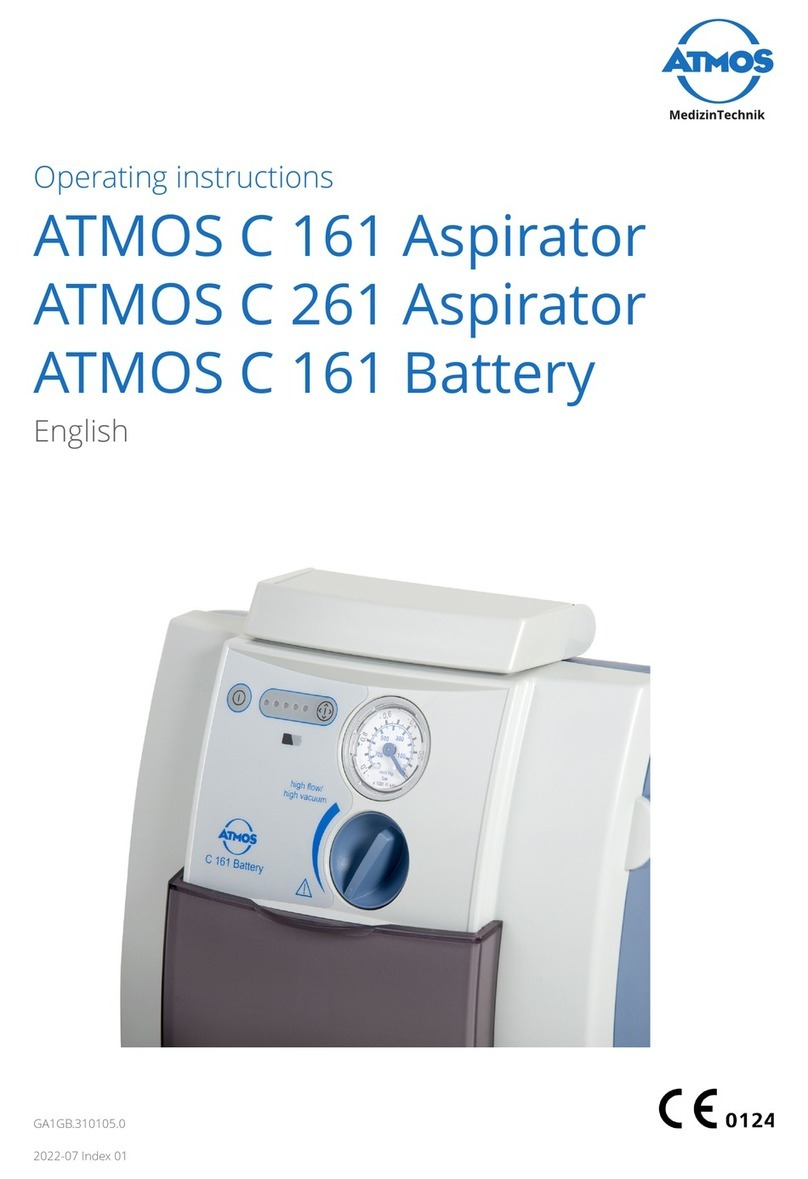
Atmos
Atmos C 161 operating instructions
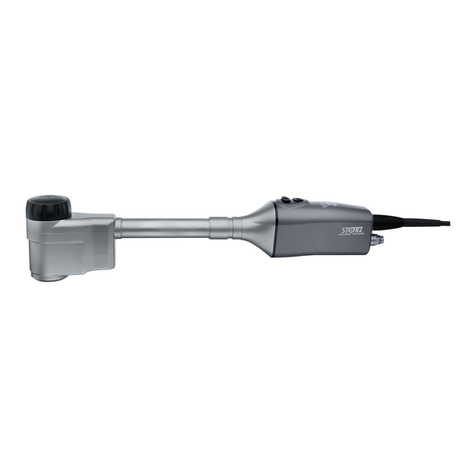
Storz
Storz TH 200 instruction manual
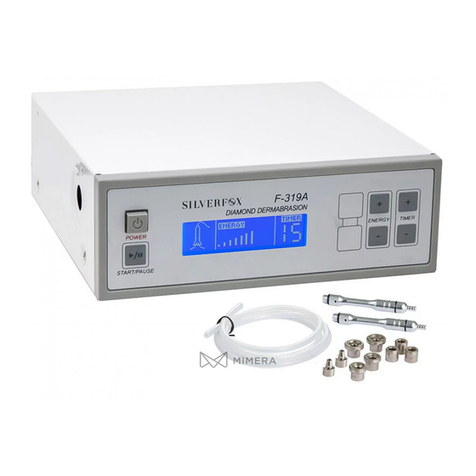
Wellnes
Wellnes Weelko F-319A instruction manual
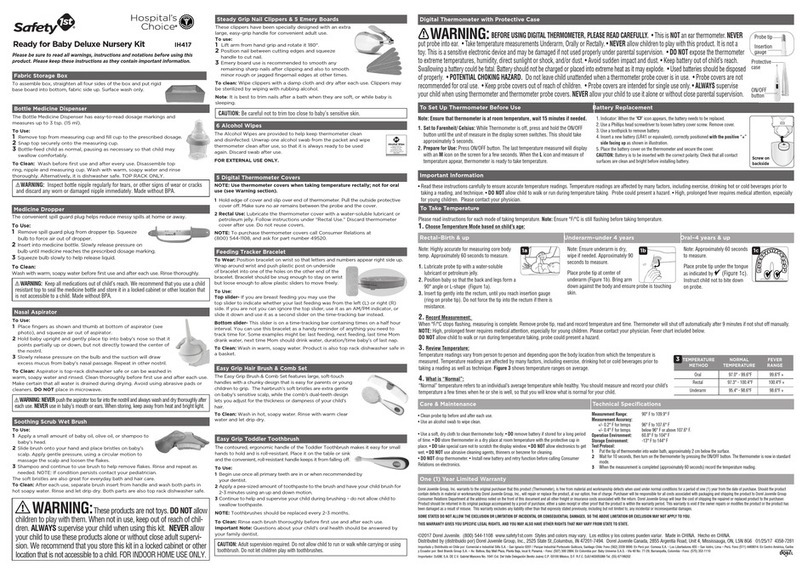
Dorel Juvenile Group
Dorel Juvenile Group Safety 1st Hospital's Choice IH417 instructions
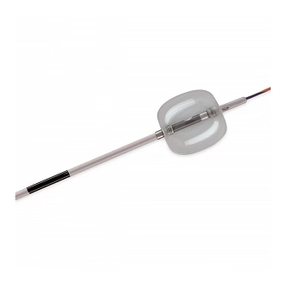
COOK Medical
COOK Medical Extraction Balloon Instructions for use


